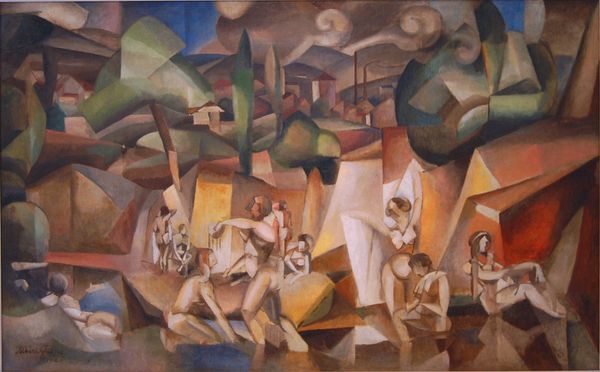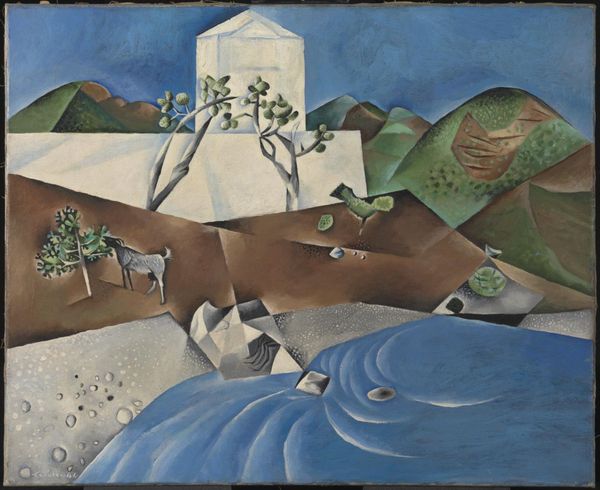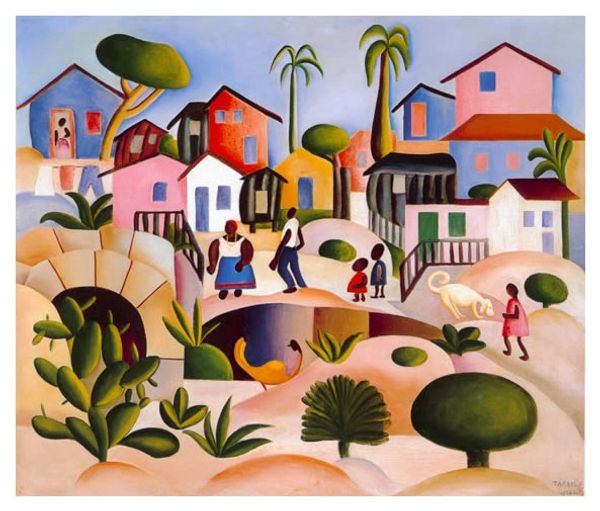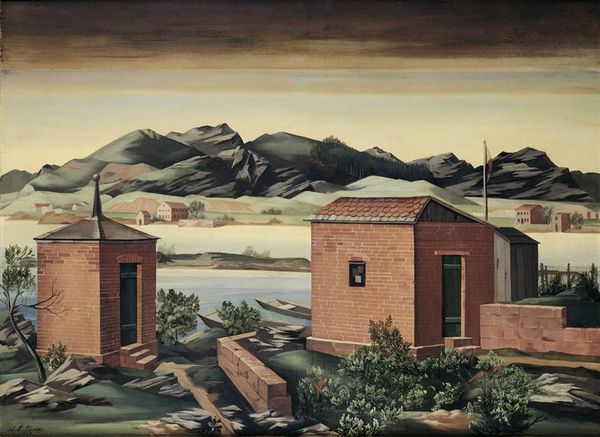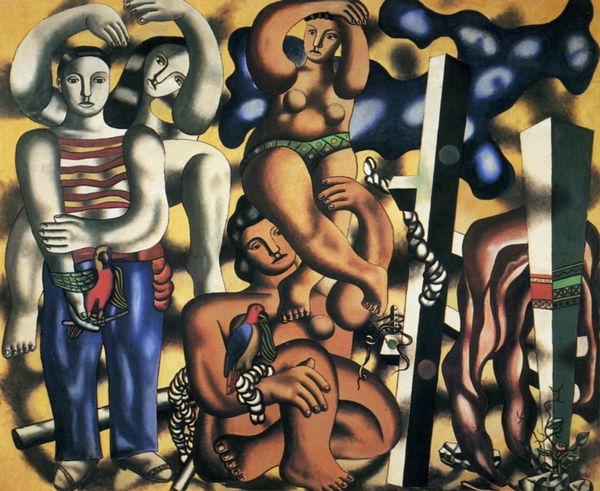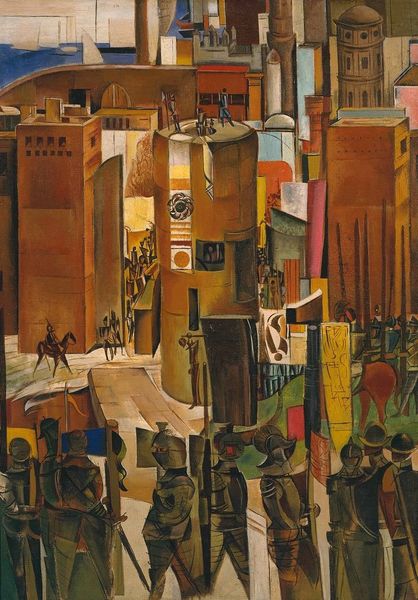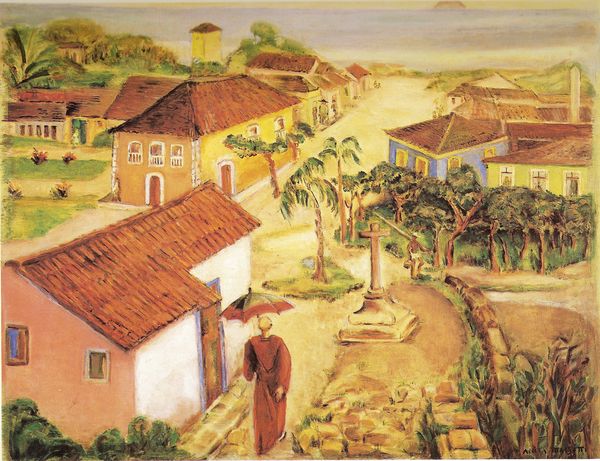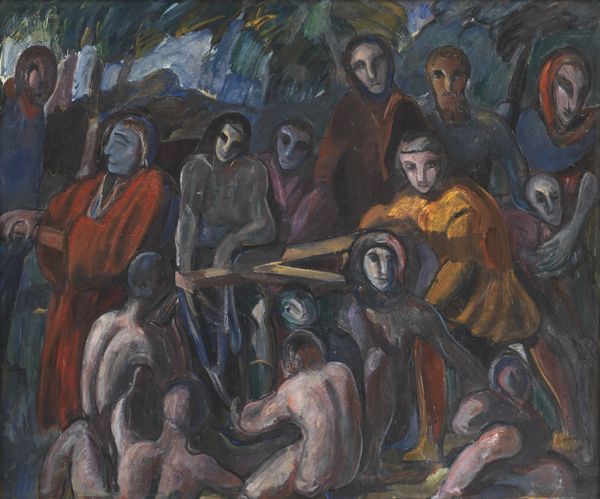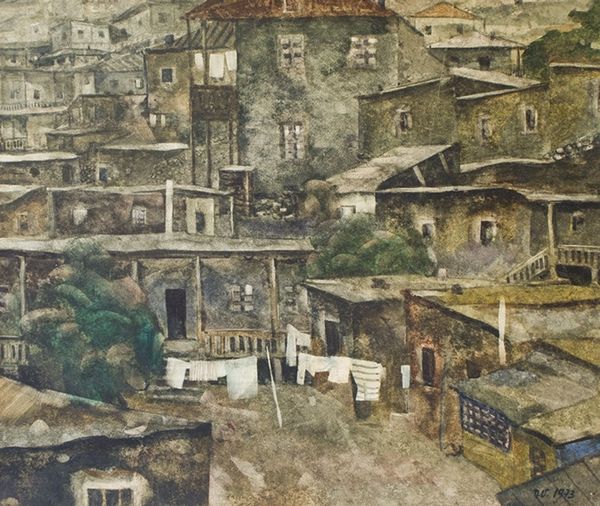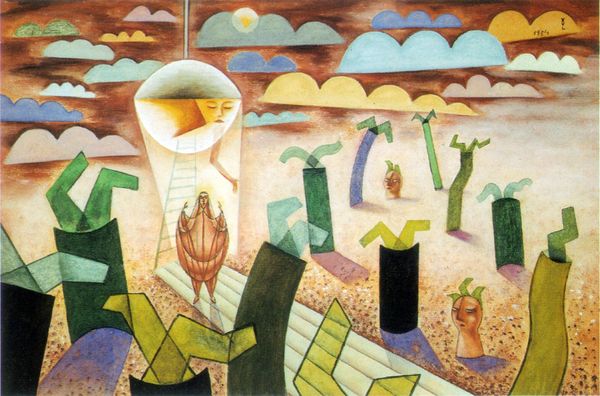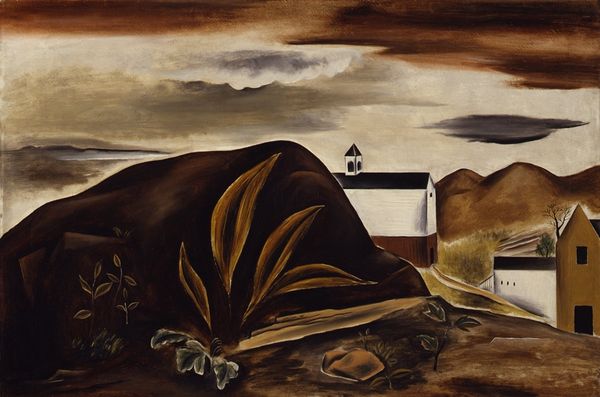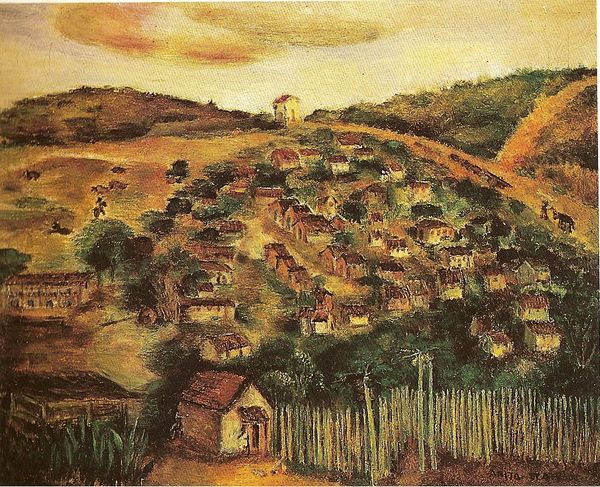
painting, oil-paint, mural
#
painting
#
oil-paint
#
landscape
#
figuration
#
social-realism
#
oil painting
#
cityscape
#
genre-painting
#
mural
#
modernism
Copyright: Candido Portinari,Fair Use
Curator: What a striking image. "Hill," an oil on canvas by Candido Portinari, created in 1933. It seems to depict a favela, a shantytown, climbing a hillside in Brazil, set against a coastal backdrop. Editor: It feels immediately dreamlike, unsettling. The stark, geometric buildings contrasting with the organic, almost fluid hillside and the distant, almost ghostly, city… there's a palpable tension here. Curator: Portinari was a key figure in Brazilian modernism and social realism. He aimed to represent the everyday lives of the working class and the poor. The composition directs our eye upward along the winding path, following the figures. Notice how the path cuts through, almost dominating, the landscape? Editor: The figures, especially those women carrying what looks like water jugs on their heads, recall ancient caryatids. They symbolize burden, resilience. But those cubic houses further up the hill almost look stacked, haphazard, adding to the unstable feeling. It's as if the modern encroaches on a more ancient way of life. And that isolated building, apart from all of the rest? Is it a government building looking over its domain? Curator: That's an insightful point. These communities often lacked basic infrastructure, like running water, which informs your symbolic observation about the jugs. The painting's title, “Hill," seems almost understated, considering the powerful visual narrative about socio-economic realities Portinari presents. His paintings gave a public voice to the marginalized, reflecting the growing social awareness in Brazil at the time. He later went on to have his artwork used as political statements of nationalism by Brazil. Editor: It's fascinating how Portinari simplifies forms – those almost cubist buildings and the simplified figures – yet conveys such complexity and humanity. The muted tones, dominated by that reddish-brown earth, further amplify the weight of the scene. It’s a portrait of survival, etched into the very land. Curator: Absolutely. It makes me consider how artistic expression reflects broader societal challenges. It gives an opportunity to understand Brazilian socio-political history during that era. Editor: It’s more than a historical record though. It is also about continuity and human effort and hardship being transferred through time via these easily understood symbols. It’s a scene imbued with a timeless quality that continues to resonate. Curator: Indeed, its potency lies in its blend of social commentary and artistic vision. Editor: Leaving us to contemplate our place in society’s stratified landscape.
Comments
No comments
Be the first to comment and join the conversation on the ultimate creative platform.
